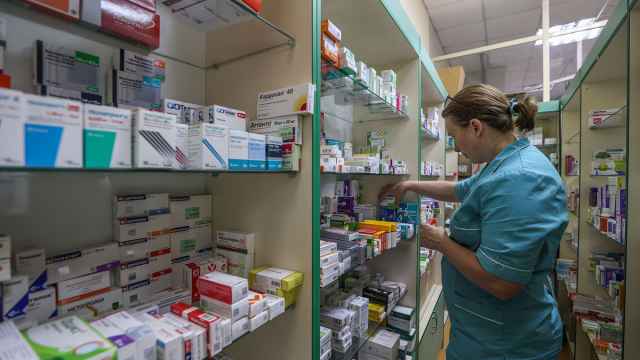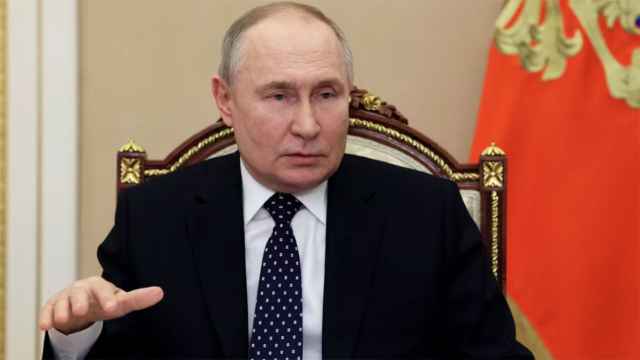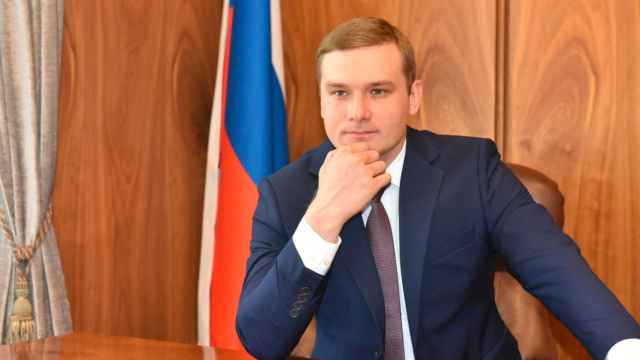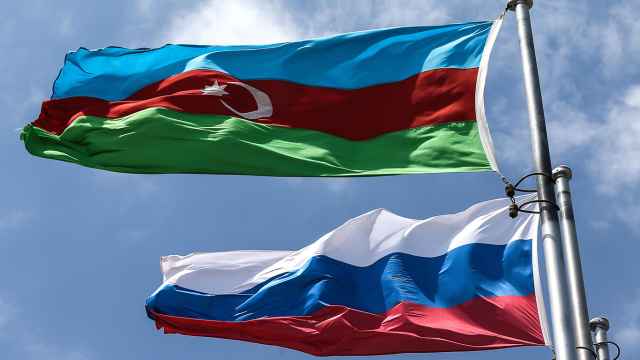A Soyuz capsule carrying two cosmonauts and a U.S. astronaut reached the international space station early Sunday, setting the stage for a pair of final shuttle missions to complete construction of the orbital outpost.
The newly upgraded Soyuz TMA-01M slipped into a docking port aboard the station at 4:01 a.m. Moscow time, two days after launching from the Baikonur Cosmodrome in Kazakhstan.
Aboard the Soyuz were veteran cosmonaut Alexander Kaleri, rookie Oleg Skripochka and NASA's Scott Kelly, a two-time shuttle flier. They join Americans Doug Wheelock and Shannon Walker and cosmonaut Fyodor Yurchikhin, who arrived at the station in June, returning the outpost — a $100 billion project of 16 nations — back to full staff.
The new crew's relatives and supporters cheered early Friday when the Soyuz engines roared and the spaceship lifted off in a blaze of orange flames, making the ground shudder. Russian engineers hugged and kissed one another after the craft shed its first stage and it became clear that the launch was a success.
Mike Suffredini, head of NASA's space station program who watched the launch from an observation point with his Russian counterparts, gave his thumbs-up to the launch: "You can hear it all the way up."
The overhauled, first all-digital Soyuz will allow a doubling of the launch rate of Soyuz spaceships, which will help maintain a crew of six aboard the space station when the NASA shuttle fleet is retired.
Kelly, a New Jersey native, will be joined at the space station by his twin brother Mark, another NASA astronaut who will fly a shuttle mission in February. The Endeavour, which will bring Mark Kelly to space, is currently set to be the last U.S. shuttle mission before NASA wraps up 30 years of shuttle flight.
The international space station celebrates its 10th anniversary on Nov. 20. The mammoth station consists of 10 modules built by the United States, Russia, Canada, Japan and the European Space Agency.
The new crew members will remain on the station for 5 1/2 months, during which time NASA plans two shuttle missions to deliver spare parts, a storage pod and the $2 billion, multinational Alpha Magnetic Spectrometer particle detector.
Those flights, scheduled for November and February, will complete U.S. assembly of the station, which has been under way since 1998.
The Soyuz that will be used to ferry the next crew to the station in December was damaged during transportation by rail from the factory outside Moscow, and Federal Space Agency chief Anatoly Perminov said Thursday that the launch could be delayed by a few days if experts rule that the craft needs repairs.
NASA's Suffredini said the United States was not worried about the incident and he expressed confidence that "the Soyuz that flies out in December will be in excellent shape."
(Reuters, AP)
A Message from The Moscow Times:
Dear readers,
We are facing unprecedented challenges. Russia's Prosecutor General's Office has designated The Moscow Times as an "undesirable" organization, criminalizing our work and putting our staff at risk of prosecution. This follows our earlier unjust labeling as a "foreign agent."
These actions are direct attempts to silence independent journalism in Russia. The authorities claim our work "discredits the decisions of the Russian leadership." We see things differently: we strive to provide accurate, unbiased reporting on Russia.
We, the journalists of The Moscow Times, refuse to be silenced. But to continue our work, we need your help.
Your support, no matter how small, makes a world of difference. If you can, please support us monthly starting from just $2. It's quick to set up, and every contribution makes a significant impact.
By supporting The Moscow Times, you're defending open, independent journalism in the face of repression. Thank you for standing with us.
Remind me later.





